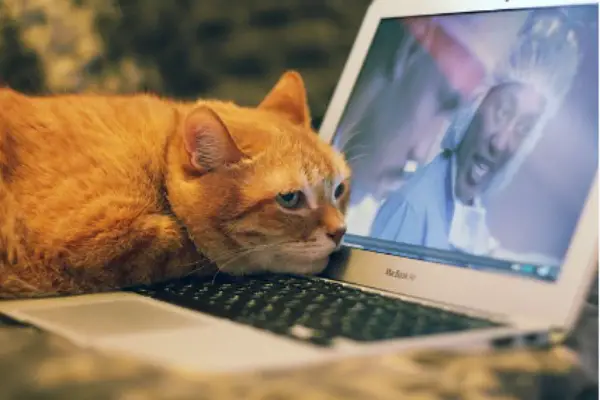12 Tips On How To hydrate a Cat That Won’t Drink Water
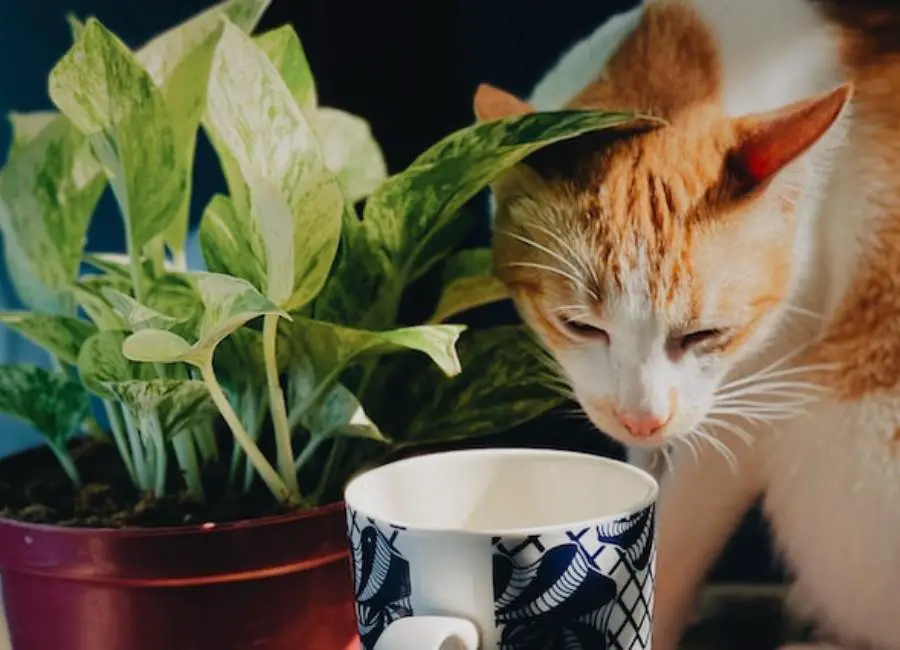
How to hydrate a cat that won’t drink water? This is exactly what this post will address!
There are a few techniques you may use to get your cat to drink more water and maintain good health.
We have the advice you need to keep your cat healthy and hydrated all year long, from flavoring their water to offering additional sources of hydration.
Signs of dehydration in cats
You should know the signs of dehydration in cats before knowing how to hydrate a cat that won’t drink water.
The following are some common signs of dehydration in cats:
- Loss of skin elasticity: If you gently pull up the skin on the back of your cat’s neck and it doesn’t quickly return to its normal position, it may be a sign of dehydration.
- Dry mouth and nose: Cats that are dehydrated may have dry, sticky gums, mouths, and noses.
- Panting or breathing rapidly: Cats may excessively pant or have rapid breathing when they are dehydrated.
- Sunken eyes: If your cat’s eyes look sunken in, it could be a sign of dehydration.
- Lethargy: Cats that are dehydrated may be very tired and have little interest in eating or being active.
- Loss of appetite: Cats may not want to eat or drink if they are dehydrated.
- Constipation: Dehydration can cause constipation in cats.
- Elevated heart rate: Cats with dehydration may have a high heart rate.
- Vomiting and/or diarrhea: These can quickly lead to dehydration in cats.
How To hydrate a Cat That Won’t Drink Water
Here are some common ways to hydrate a cat that won’t drink water:
1. Provide multiple water bowls
Placing water dishes in various locations throughout the house may encourage cats to drink more since they may prefer to drink from diverse sources.
Keep the water bowls clean and filled with fresh water, and think about choosing a shallow or wide-mouthed dish if your cat doesn’t like to drink from deep bowls.
2. Provide ice cubes
Besides encouraging them to drink more water, some cats like playing with ice cubes.
A few ice cubes can be added to their water bowl or another dish.
To add taste and get them to drink more, you may also freeze some chicken broth or tuna juice in an ice tray and add the ice cubes to their water dish.
3. Provide wet food
Feeding your cat canned or pouch food can improve their water consumption.
Wet food has a higher water content than dry food, which can assist to keep your cat hydrated.
Wet food is a great source of hydration since it often includes 70 to 80 percent water.
If your cat prefers dry food, try moistening the kibble with a little water to make it more palatable.
4. Provide a water fountain
A water fountain can assist to encourage cats to drink more water since they are innately drawn to moving water.
Your cat may find drinking water more appealing because of the sound and movement of the water.
A water fountain’s continual water circulation can also aid to keep the water fresher for longer.
Here’s a water fountain we recommend, since it also contains a feeding bowl close to it.
5. Provide fresh water regularly
Fresh water is more likely to be consumed by cats, thus it’s crucial to supply it daily.
You may measure how much water you put in the dish in the morning and check it in the evening to see how much your cat has to drink.
This will help you make sure that your cat is getting enough to drink.
6. Adding low-sodium chicken or beef broth
Your cat may be persuaded to drink more water if you flavor it with low-sodium chicken or beef broth.
Cats may find the water more alluring due to the flavor and aroma of the broth.
Broth may also add some extra nutrients, such as minerals and protein.
7. Adding a small amount of tuna juice
Your cat’s water may become more appealing if you add a tiny bit of tuna juice to it.
While too much tuna juice might have negative effects on health, it’s crucial to keep the amount in check.
Use it lightly, as tuna juice has a high salt content and can include mercury.
8. Try syringe feeding
If your cat is really dehydrated and won’t drink water on their own, you can use syringe feeding water or an electrolyte solution to help them rehydrate.
To protect your cat from harm, you should only perform this if needed, but it can also help.
You can dissolve your cat’s food in water, take some part of the liquid in a syringe and try feeding your cat while petting them.
9. Throw some treats inside the cat water bowl
If your cat refuses to drink but still takes treats from you then this might work for you.
Call your cat, and offer your cat one treat, it could be a piece of chicken or anything he loves.
Then throw the next one into your cat’s drinking water and encourage your cat to take it, repeating the process over and over.
Remember to discard the water bowl and wash it after use to avoid microorganism growth.
10. Try giving your cat milk
Some cats like to drink milk, despite the fact that it is not a replacement for water.
It’s crucial to keep in mind that many cats are lactose intolerant, thus lactose-free milk is preferable.
Milk should also only be given in modest doses because it is heavy in calories and fat.
11. Mix small canned tuna
Your cat may drink more if you add a tiny bit of canned tuna to some water, but remember to keep the amount minimal because too much tuna might be unhealthy.
Only sometimes and not as a regular source of fluid intake should canned tuna be utilized to get a cat to drink.
Moreover, canned tuna in water may not be suitable for all cats since some cats dislike its texture, but you should give it a try and see if it works.
12. Monitor water intake
It’s crucial to monitor how much water your cat consumes.
Try some of the suggestions above to get them to drink more water if you discover they aren’t doing so.
By observing the color and frequency of their pee, you can keep an eye on their level of hydration as well.
See your veterinarian for further information if you have concerns about your cat’s levels of hydration.
FAQs
Why won’t my cat drink water?
There could be various reasons why your cat is not drinking water, including being picky about the temperature or flavor of the water, having an underlying medical condition, or feeling stressed or anxious.
Learn more about why your cat is hiding and not eating.
What are some signs that my cat is dehydrated?
Some signs that your cat is dehydrated include dry gums, sunken eyes, lethargy, loss of appetite, and dark yellow urine.
Can I give my cat milk instead of water?
While cats may enjoy drinking milk, it is not a substitute for water and can actually cause digestive issues. You should still encourage your cat to drink water.
Learn more about the reasons why your cat can stop eating.
How can I make my cat drink water?
You can make water more appealing to your cat by offering it fresh and cool or adding some flavoring like tuna juice or chicken broth.
You can also try using a water fountain or placing multiple bowls of water around your home.
Can I administer water to my cat orally?
If your cat is severely dehydrated, you can administer water orally using a syringe or eye dropper.
However, it is important to do this under the guidance of a veterinarian.
Learn more about cats being lethargic and not eating.
When should I take my cat to the vet for dehydration?
If you notice any signs of dehydration in your cat, it is important to take them to the vet as soon as possible to rule out any underlying medical conditions and receive appropriate treatment.
Learn more about cats eating raw meat.
Conclusion
Keeping your cat hydrated is essential for the cat’s general health and well-being. Dehydration can cause a lot of issues for cats.
There are various strategies to urge your cat to drink more water if they are not doing so already.
There are numerous easy actions you can take to make sure your kitty buddy is hydrated, from giving fresh, clean water at all times to adding water to their meals.
Keep in mind that a happy cat is a healthy cat, so make sure their water bowl is always full, and they have access to plenty of water.

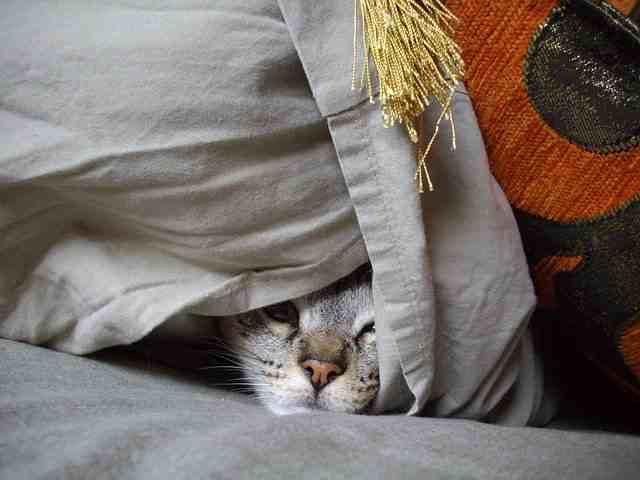
![How to Keep Outdoor Cats Warm in Winter [10 Hints] How to Keep Outdoor Cats Warm in Winter](https://petcreeks.com/wp-content/uploads/2023/10/pexels-aleksandr-nadyojin-7335655.jpg)
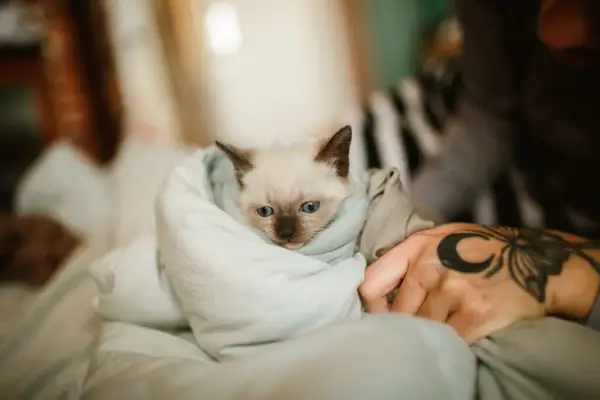
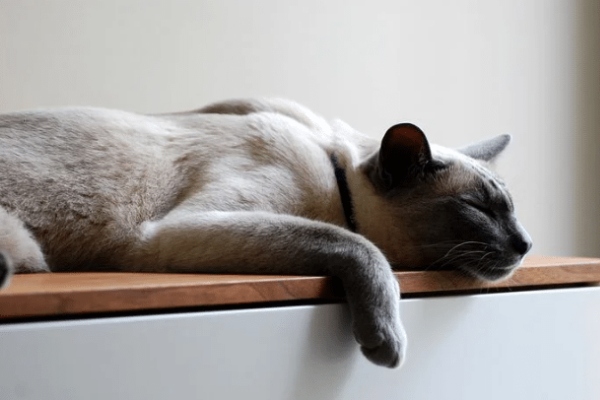
![Why Is My Kitten Drinking So Much Water [9 Reasons] Why Is My Kitten Drinking So Much Water](https://petcreeks.com/wp-content/uploads/2023/12/pexels-helena-jankovicova-kovacova-16440316.jpg)
